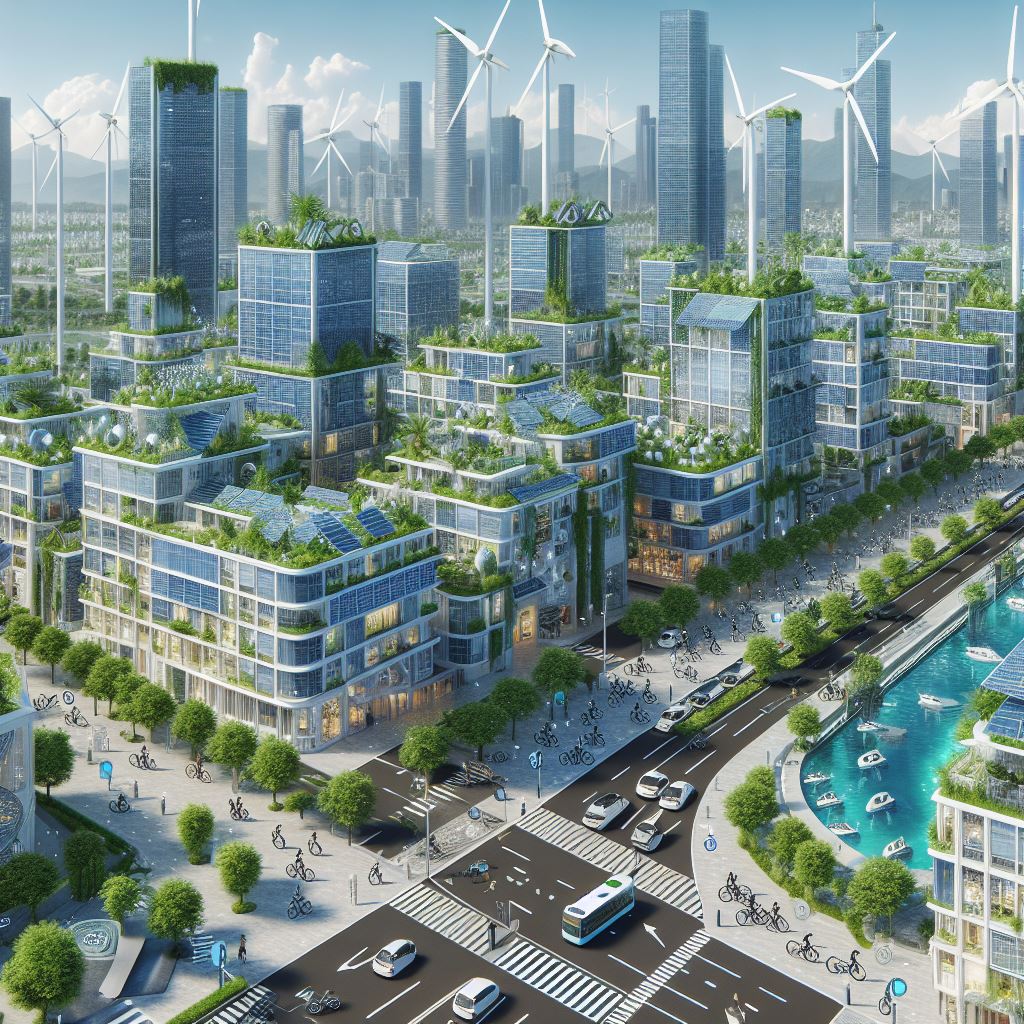
The term ‘energy-positive buildings’ might sound like an avant-garde concept from a distant, utopian future. Yet, what might astound many is that such groundbreaking structures are not simply flights of fancy. They are real, operational, and proliferating in today’s architecture. These marvels of engineering leap over it, becoming powerhouses that contribute excess energy back to the grid.
Energy-positive buildings represent the pinnacle of green architecture. They are masterpieces that seamlessly blend aesthetics with functionality while being attuned to the environment. This symbiosis of form and efficiency is meticulously crafted through innovative design choices and progressive technology.
Green Architecture: The Cornerstone of Sustainable Development
At the intersection of design and sustainability lies green architecture, a foundational pillar for energy-positive buildings. This design philosophy is infused with the commitment to reduce carbon footprints, harnessing both renewable resources and energy-efficient technologies. A significant characteristic of green architecture is its lifecycle approach, which scrutinizes the environmental impact of a building from conception, throughout its functioning, and even to its eventual deconstruction.
Green architecture is far from a static field; it’s an ever-evolving discipline that continues to push the envelope. Each energy-positive building is a testament to the possibilities that surface when innovation is guided by ecological consciousness.
Energy-Positive Buildings
Distinguished from standard constructions by their ability to produce more energy than they use over the course of a year, energy-positive buildings are the Olympians of energy efficiency. The credo to achieve such an ambitious goal hinges on two pivotal factors: generating renewable energy and minimizing consumption.
Solar panels, wind turbines, and geothermal systems are the usual suspects when it comes to on-site renewable energy generation. Smart design plays its part too, with strategic placement and orientation of buildings to maximize natural light and insulation, thus slashing the need for artificial lighting and excessive heating or cooling.
Minimization of consumption doesn’t end with smart design. It extends to every fixture and fitting within these structures. LED lighting, highly efficient HVAC systems, and state-of-the-art insulation materials are just a few of the multitude of aspects that make these buildings thrifty with energy.
Self-Sufficient Structures: Engineering Independence
The allure of self-sufficiency embodies a profound sense of resilience and autonomy. Structures designed for self-sufficiency operate akin to living entities, capable of fulfilling their energy needs without relying on external support. This independence holds particular appeal in a world confronting the uncertainties of energy provision and the challenges posed by climate change.
The integration of energy storage solutions, such as batteries and thermal storage systems, plays a pivotal role in enabling these structures to uphold their self-sufficiency. Even when the sun sets or the wind subsides, these systems ensure continuous operation by storing surplus energy generated during favorable conditions. This sophisticated approach guarantees a stable and reliable power supply, bolstering the autonomy of energy-positive buildings throughout the day and night.
Moreover, the pursuit of self-sufficiency fosters innovation in renewable energy technologies, driving advancements in efficiency and reliability. As these technologies evolve, they not only enhance the resilience of individual structures but also contribute to broader efforts aimed at mitigating the impacts of climate change and reducing dependence on fossil fuels.
Eco-Friendly Construction
Building materials in the world of energy-positive buildings aren’t chosen merely for their structural properties but for their environmental lineage as well. Eco-friendly construction goes beyond surface-level ‘greening’; it involves meticulously choosing materials that have a reduced impact on the planet, ranging from bamboo and reclaimed wood to recycled steel and low-emission glass. The production processes of these materials are also scrutinized to ensure a low ecological footprint.
Advanced construction techniques like 3D printing are revolutionizing the way eco-friendly materials are utilized, enabling precise and efficient use of resources and minimizing waste on construction sites. This attention to the ‘how’ of construction, as much as to the ‘what,’ exemplifies the holistic sustainability ethos of energy-positive buildings.
The Power of Technology and Intelligent Systems
What sets energy-positive buildings apart is also their use of technology to monitor and manage their environmental performance actively. Building automation systems (BAS) are the neural networks of these structures, collecting data and autonomously adjusting settings for optimal energy consumption.
Integration of intelligent systems such as IoT devices and smart meters not only enhances the performance of these buildings but also engages the occupants, making them active players in the energy cycle. Through apps and dashboards, residents and building managers can track real-time energy production and consumption, fostering a sense of participation and accountability.
Driving Sustainable Development Forward
The surge in energy-positive buildings signifies a larger movement towards sustainable development, an endeavor that balances the need for progress with environmental preservation. These structures underscore the fact that development need not be at odds with ecological stewardship. Indeed, they prove that the two can go hand in hand, propelling society towards a brighter, cleaner, and more sustainable future.
The proliferation of energy-positive buildings is more than just an architectural trend. It’s a reflection of an emerging zeitgeist that places sustainability at the core of how we envision and construct the spaces we inhabit. It’s a resounding affirmation that humanity can innovate without detriment to the Earth.
By harnessing the power of green architecture, self-sufficient structures, eco-friendly construction, and smart technology, energy-positive buildings are soaring as the standard bearers for a new era in sustainable development. As we witness the rise of these edifices, we’re not just seeing buildings. We’re witnessing the crystallization of an ethos, one that promises a harmonious future where sustainability meets innovation.

